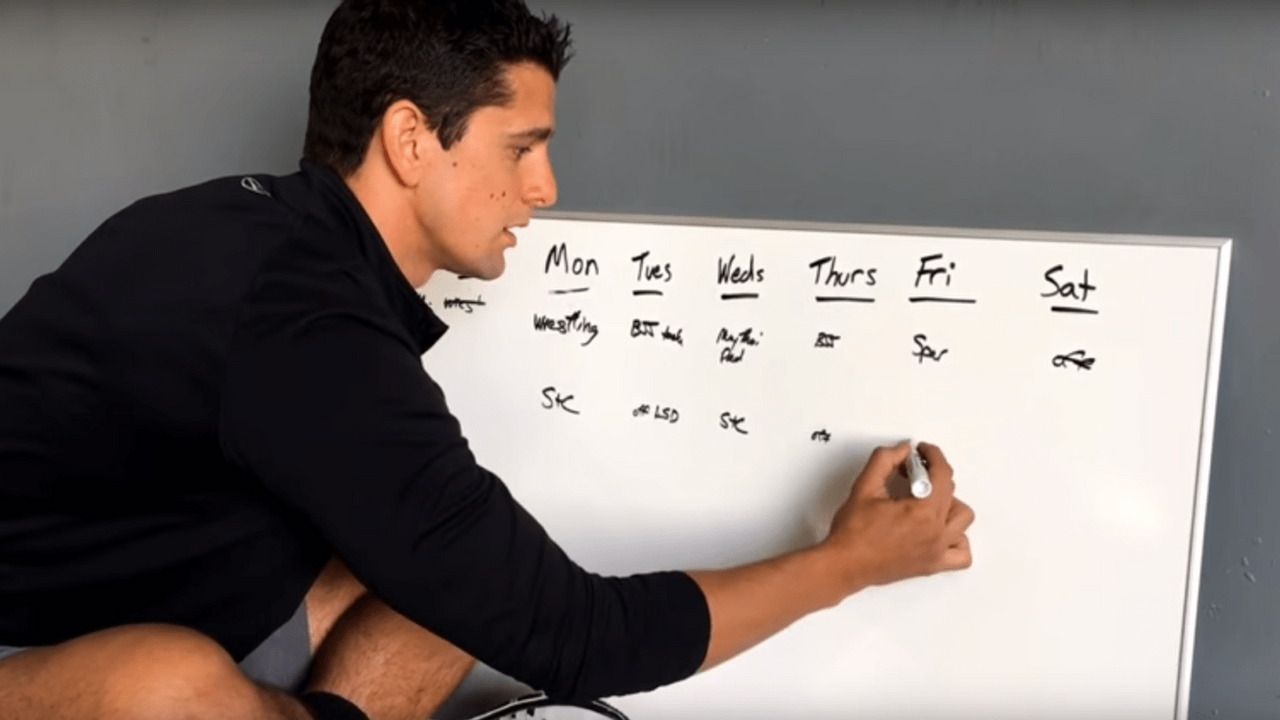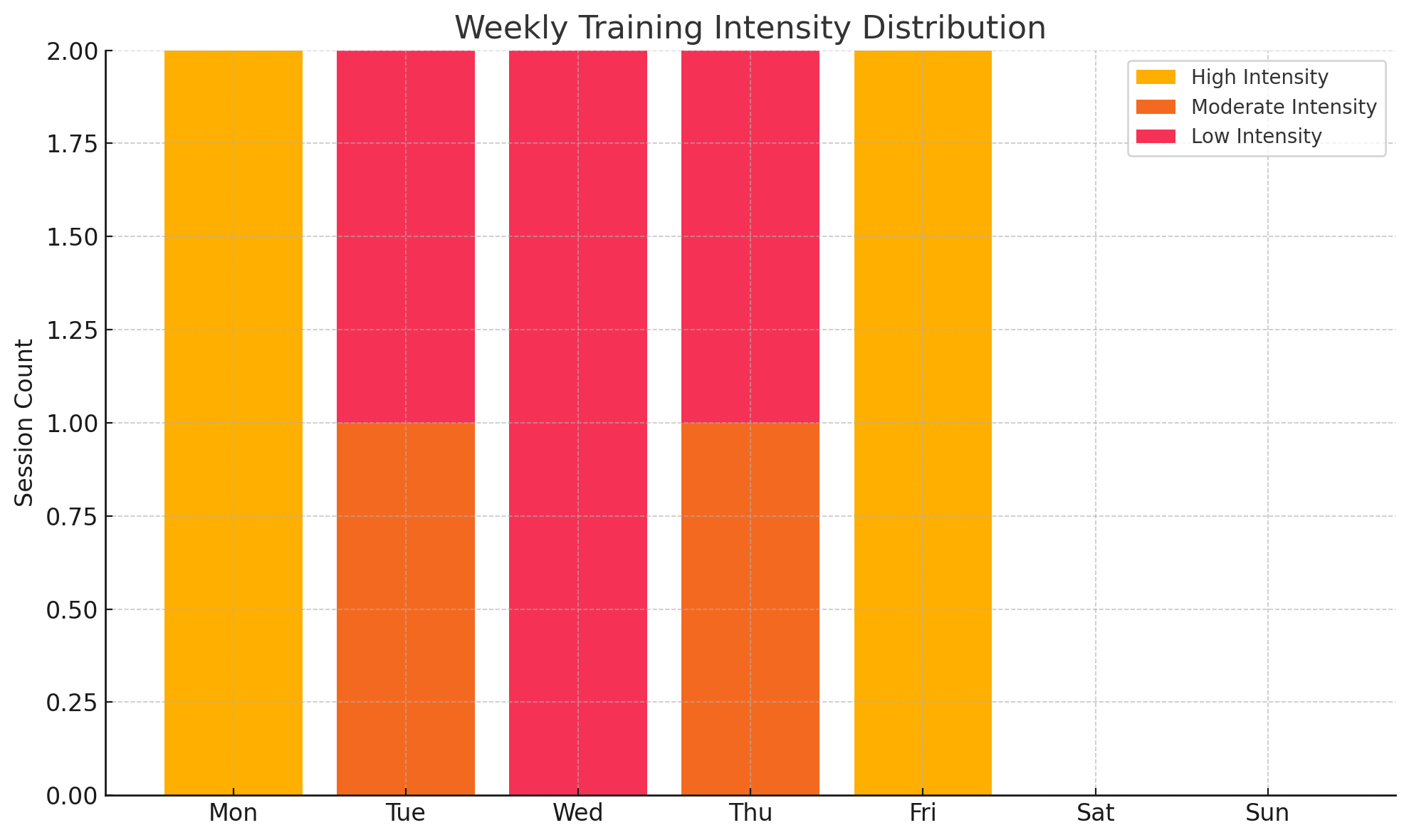
Coach’s Tips: Planning Out Your Weekly Training Schedule
Ever feel like you're running on fumes by midweek, despite sticking to your rigorous training schedule? You're not alone. Many fighters unknowingly sabotage their performance by neglecting a crucial component: recovery.
Think of your body as a high-performance engine. Without regular maintenance and the right balance between exertion and rest, even the most powerful machines can break down.
In this article, we'll explore how to structure your MMA training to optimize performance, prevent burnout, and keep you in the fight—both mentally and physically.
Understanding the Pitfalls of Daily High-Intensity Training
"A decline in performance should lead to a search for its cause and to a focus on the quality of your recovery." — Sage Rountree
Jumping headfirst into high-intensity workouts every day might seem like the fast track to success. However, this approach can backfire, leading to overtraining and increased injury risk.
Studies have shown that 59.4% of MMA fighters sustain some form of injury during bouts, highlighting the physical toll of the sport.
As the saying goes, "Train smarter, not harder." Prioritizing recovery is essential for long-term success.
Crafting a Balanced Weekly Training Schedule
Structuring your training week with a mix of high, moderate, and low-intensity sessions can enhance performance and reduce injury risk.
Here's a sample schedule:
- Monday: Morning - Wrestling (High Intensity); Evening - Strength & Conditioning (High Intensity)
- Tuesday: Morning - BJJ Technical Work (Moderate Intensity); Evening - Long, Slow Distance Cardio (Low Intensity)
- Wednesday: Morning - Muay Thai Pad Work (Low-Moderate Intensity); Evening - Strength & Conditioning (Low Intensity)
- Thursday: Morning - BJJ (Moderate Intensity); Evening - Technical Work or Rest (Low Intensity)
- Friday: Morning - Sparring (High Intensity); Evening - Strength & Conditioning (High Intensity)
- Saturday & Sunday: Rest and Recovery
This approach ensures that high-intensity sessions are strategically placed to allow for adequate recovery.
The Science Behind Recovery: Why Rest Is Non-Negotiable
Intense exercise creates micro-tears in muscle fibers. It's during rest that these fibers repair and grow stronger. Without sufficient recovery, this process is hindered, leading to decreased performance and increased injury risk.
Tip: Ensure you're getting 7-9 hours of quality sleep each night to support muscle recovery.
Recognizing the Signs of Overtraining
Overtraining syndrome (OTS) can sneak up on even the most dedicated athletes. Symptoms include persistent fatigue, sleep disturbances, and a weakened immune system.
Being attuned to these signs can prevent long-term setbacks.
Integrating Active Recovery into Your Routine
Active recovery involves engaging in low-intensity exercises to promote blood flow and aid muscle repair. Activities like yoga, swimming, or light jogging can be beneficial.
As noted by Evolve MMA, "Active recovery is an effective strategy for reducing muscle fatigue and enhancing the overall recovery process."
Leveraging Mental Health Resources for Peak Performance
The mental demands of MMA are as taxing as the physical ones. Seeking support from sports psychologists can provide tools to manage stress and enhance focus.
Visual Breakdown: Structuring Intensity for Smarter Gains
Here’s a simple visualization to help you see the weekly spread of training intensities. This balance ensures peak performance without tipping into exhaustion:

The chart shows how spacing out your high, moderate, and low-intensity days provides room for recovery, reduces injury risk, and keeps your nervous system fresh for peak sessions.
FAQ: Quick Answers for Curious Fighters
1. Can I still build strength with fewer high-intensity sessions?
Yes! Strategic, well-recovered high-intensity sessions are more effective than frequent, fatigued ones. Quality always trumps quantity.
2. How do I know if I'm overtraining?
Look for chronic fatigue, irritability, disrupted sleep, or a drop in performance. If you're feeling "off" for more than a few days, it's a red flag.
3. Is active recovery really necessary?
Absolutely. It boosts circulation, reduces soreness, and aids recovery without further taxing the body.
Action Steps: Apply This Strategy Today
- Audit your current schedule: Identify which days are overloaded with intensity.
- Map your week: Assign high, moderate, and low-intensity labels to each session.
- Pair high days: Stack your toughest workouts on the same day with hours between.
- Prioritize skill work: Keep technical sessions fresh by avoiding fatigue beforehand.
- Respect recovery: Dedicate at least one full day to complete rest and another to active recovery.
- Track & adjust: Use a journal to monitor fatigue, sleep, and mood. Tweak as needed.
Conclusion: Your Secret Weapon Isn't Training Harder—It's Training Smarter
Let's be real—grit alone won't get you to the top. It's your strategy, your ability to listen to your body, and your willingness to rest that separates the broken from the battle-ready. Remember, rest isn't weakness—it's weaponry.
By creating a schedule that honors both effort and recovery, you're setting yourself up for peak performance, fewer injuries, and longer-term success. The cage doesn’t care how much you trained—it only knows how ready you are when the lights hit.




